Pepperstone Broker Review 2025: trader reviews, reliability, terms and commissions
What mindset should a trader have to vet a broker this thoroughly? Probably the same one we all need when putting real money on the line. Pepperstone is a broker whose name has grown louder on the global stage year after year. Founded in Melbourne in 2010, it has expanded over 15 years from a local startup into a global company with hundreds of thousands of clients. Today Pepperstone is regulated by seven financial authorities and processes more than $320 billion in monthly trading volume. More than 750,000 traders across 160 countries have already chosen Pepperstone as their broker. What drives that trust—and is Pepperstone a good fit for you? Let’s break it down with facts, hands‑on observations, and a clear comparison with competitors.
Contents
- Pepperstone: pros and cons
- Pepperstone reliability and regulation
- Pepperstone at a glance
- Pepperstone account types
- Trading fees and spreads
- Leverage and margin requirements
- Pepperstone trading platforms
- Additional trading features
- Markets and instruments
- Research and trader education
- Customer support
- Account opening and verification
- Deposits and withdrawals
- Pepperstone for beginners
- Pepperstone for experienced traders
- How Pepperstone compares to other brokers
- Real trader reviews of Pepperstone
- Conclusion
Pepperstone: pros and cons
Pepperstone has earned a reputation for transparent terms and modern technology. No broker is perfect, though—even leaders have drawbacks. Here are the key advantages and disadvantages that set expectations right away:
Pepperstone advantages:
- Multi‑layer regulation and reliability. The broker holds licenses from ASIC, FCA, CySEC, BaFin, DFSA, CMA and SCB—meaning strict oversight and client fund protection. Money is kept in segregated accounts with top‑tier banks, and negative balance protection prevents retail accounts from going below zero.
- Tight spreads and low fees. On Razor you get raw spreads from 0.0 pips on major FX pairs with a round‑turn of about $7 per lot on MT4/MT5. Standard spreads are also competitive (~1.1–1.3 pips on EUR/USD) with $0 commission—costs are built into the spread. There are no account maintenance or inactivity fees, and no deposit/withdrawal fees (except bank SWIFT charges).
- Fast, high‑quality execution. Orders are handled automatically with no dealing desk (NDD) and ~99.9% fill rate. Equinix‑based infrastructure delivers low latency—great for scalpers and algorithmic traders. All strategies are allowed: scalping, hedging, and news trading are permitted.
- Choice of platforms and tools. Five professional platforms are available: MetaTrader 4/5, cTrader, TradingView integration, and Pepperstone’s own web terminal. Plus copy trading, VPS hosting, Autochartist, and Smart Trader Tools for MT4/MT5—often free if you meet certain conditions.
- Strong service and education. Support runs 24/5 (and ~18 hours on weekends). Agents reply quickly via chat, email, and phone. In practice, Pepperstone support genuinely tries to help—whether it’s verification, a tech hiccup, or platform guidance. You also get extensive education: webinars, trading guides, and daily analysis from experts (e.g., Chief Strategist Chris Weston).
Pepperstone disadvantages:
- No proprietary desktop platform. While third‑party choice is broad, Pepperstone lacks its own unique desktop terminal (there’s a webtrader). Some won’t mind; others prefer a native platform.
- CFDs only. You trade markets via CFDs. You can’t buy real shares or hold crypto in a wallet—only speculate on price movements. That’s fine for most traders, but buy‑and‑hold investors seeking actual ownership may look elsewhere.
- No welcome bonuses or promos. Unlike some rivals, Pepperstone follows strict rules and doesn’t offer deposit or no‑deposit bonuses. The focus is on trading conditions rather than marketing perks—which many experienced traders prefer, though beginners may find it less exciting.
- Country restrictions. Since 2022 Pepperstone has stopped onboarding new clients from Russia (internal policy and sanctions risk).
In short, Pepperstone’s pros matter to active traders: fund safety, low costs, technology, and service. The cons are relative and depend on your goals and location. Next, we’ll examine every aspect—from regulation to account types, trading conditions, and real client feedback.
Pepperstone reliability and regulation
Reliability is the cornerstone of broker selection. By this measure, Pepperstone is rightly among market leaders. The company is licensed by several strict regulators:
- ASIC (Australia) — Australian Securities & Investments Commission. Pepperstone Group Limited is registered in Melbourne and holds AFSL No. 414530. ASIC is known for high capital and client‑protection requirements.
- FCA (United Kingdom) — Financial Conduct Authority. Pepperstone Limited is registered in London and authorised by the FCA (FRN 684312). UK clients benefit from FSCS protection—up to £85,000 per person if the broker becomes insolvent.
- CySEC (Cyprus) — Cyprus Securities and Exchange Commission. Pepperstone EU Limited received CySEC license No. 388/20 in 2020. Operating under EU MiFID II adds transparency. EU clients are covered by the ICF up to €20,000 per account.
- BaFin (Germany) — Federal Financial Supervisory Authority. Pepperstone GmbH (license No. 151148) underscores the broker’s serious presence in the EU. BaFin is one of the most conservative, detail‑oriented regulators.
- DFSA (UAE) — Dubai Financial Services Authority. Pepperstone Financial Services (DIFC) Limited is registered in Dubai with license No. F004356—evidence of global reach and high standards in the Middle East.
- CMA (Kenya) — Capital Markets Authority. Pepperstone Markets Kenya Limited holds license No. 128 in Nairobi. It’s one of the few Western brokers with a local African license, boosting trust in the region.
- SCB (The Bahamas) — Securities Commission of The Bahamas. Pepperstone Markets Limited (Reg. No. 177174 B) is licensed by SCB under SIA‑F217. This jurisdiction serves many clients outside the EU/Australia and allows higher leverage up to 1:500. Despite being offshore, SCB is a respected regulator requiring regular reporting.
This breadth of licenses is rare. Pepperstone adheres to multiple jurisdictions’ rules: segregated client funds, regular audits, AML compliance, and fair‑dealing standards. For example, if you trade via the UK entity, deposits are held with a major London bank; via Australia—an Australian Tier‑1 bank.
Client fund protection is multi‑layered. Beyond regulation, the broker offers negative balance protection for retail accounts: if a position goes deeply against you (e.g., on a market gap), Pepperstone zeroes any negative balance. You won’t owe the broker money—your maximum risk is your deposit. Typically, the stop‑out system closes losing trades before that—retail stop‑out triggers at 50% margin. For professional clients the stop‑out threshold is lower (20%), and negative balance protection doesn’t apply (an industry standard).
Deposit insurance and compensation schemes. Under UK and Cyprus regulation, Pepperstone is connected to compensation funds. In a rare insolvency event (none in its 15‑year history), Pepperstone UK clients could claim up to £85k via the FSCS, and Pepperstone EU clients up to €20k via Cyprus’s ICF. Given Pepperstone’s financial stability—profitability, solid reserves, and a reputation as one of the more reliable forex brokers—the chance of needing this safety net appears low.
Track record and reputation. Pepperstone has been operating since 2010—a meaningful time span. I remember the early 2010s when dozens of brokers sprang up and many vanished. Pepperstone not only survived but climbed into the global top tier by volume. Daily turnover exceeds $12.5 billion, and by April 2025 monthly volumes surpassed $320 billion. The broker has earned numerous awards, including “Best Broker 2024” (CompareForexBrokers), “Best Trading Service for Professional Traders” (Professional Trader Awards 2024), and “Best MetaTrader 4 Broker” (Forex Expo). These recognitions reflect quality acknowledged by the trading community.
Reliability verdict: Pepperstone is exemplary in regulation and client protection. My 11 years of trading suggest that brokers who strictly follow regulatory rules rarely let traders down. With Pepperstone, you can be confident the broker won’t “disappear with funds,” won’t manipulate prices, and will meet its obligations. Next, let’s look at the company overview and where it sits among forex brokers.
Pepperstone at a glance
When and by whom was Pepperstone founded? The company launched in 2010 amid the rise of electronic trading. The founders—a group of experienced traders led by Owen Kerr and Joe Davenport—set out to build a broker “by traders for traders.” They were dissatisfied with slow execution, high costs, and poor service at existing firms and decided to do better. The first office opened in Melbourne, initially attracting local clients with then‑novel ECN technology and tight spreads.
Growth and global expansion. Within a couple of years Pepperstone entered international markets. By 2015 the company served tens of thousands of traders and opened a London office under the FCA. Geographic reach then widened: Dubai, Nairobi, Düsseldorf, Cyprus. Pepperstone now has 10 global offices across continents—from Germany to The Bahamas. Traders from 160+ countries use its services. According to internal stats, Pepperstone executes dozens of trades every second, and the total number of registered accounts long ago topped 1 million (with roughly 400–750 thousand active, depending on methodology).
Market position and achievements. Pepperstone is often cited among the largest forex brokers worldwide by volume. Internal figures suggest about $12.55 billion of client trades per day—placing it in the global top five by that metric. Client satisfaction is also high: in Investment Trends 2020 the broker ranked #1 for overall satisfaction among Australian brokers. On Trustpilot Pepperstone scores ~4.4/5 (based on ~3,000 reviews), with praise for quick withdrawals and responsive support. Complaints do occur (e.g., strict KYC or occasional bank delays), but the company tends to respond publicly and resolve issues.
Notably, Pepperstone remains privately held and is not exchange‑listed, yet discloses plenty of information—its site features fresh stats like “750k+ traders, $50M withdrawn monthly, 99.89% of orders filled without requote.” Such openness is uncommon among forex/CFD providers. In my view, it’s part of the philosophy: win trust through delivery and transparency rather than hype.
Awards and recognition. In recent years Pepperstone has collected an impressive set of awards. Beyond the titles above—“Best Broker,” “Best Platform,” “Best Spreads” (Investment Trends), “Best Broker for Scalping” (Forex Awards), “Top‑10 Most Reliable Brokers” (Finance Magnates). Pepperstone also became an official partner of the Aston Martin Formula 1 team in 2022—another sign of scale and financial strength.
Overall, Pepperstone looks like a well‑established, reputable online broker with global recognition. Now to the practical side—what account types are available and how they differ.
Pepperstone account types
Pepperstone aims to cover different trader profiles, so it offers several account types. Like most forex brokers, it separates standard and advanced accounts. You can choose between Standard and Razor, plus there’s an Islamic (Swap‑Free) option and a demo account for practice. Notably, Pepperstone has no minimum deposit—you can start with any amount. From experience, ~$200 is a practical starting point to handle margin and costs comfortably.
Pepperstone Standard account
Standard is a classic commission‑free account where the broker earns via a small spread markup. All trading costs are already included in the spread; no extra per‑trade fee is charged. It’s convenient for newcomers and those who prefer simplicity: you see the full spread upfront without calculating commissions.
- Spreads. On majors, spreads are slightly wider than Razor but still attractive. EUR/USD typically ~1.0–1.3 pips in normal conditions. Popular indices (S&P 500, DAX) can be 0.5–1.0 points with zero commission. Pepperstone states it adds about 1 pip markup to raw interbank FX spreads—modest compared with many rivals whose EUR/USD standards are ~1.5–2 pips.
- Commissions. None for opening/closing trades (beyond what’s in the spread). No turnover or account fees—you pay the spread and overnight swap if you hold positions. Exception: share CFDs. On Standard, US shares start from $0.02 per share (min $1), European/UK shares ~0.10%—typical for equity CFDs.
- Who it’s for. Ideal for beginners who trade less frequently and want a straightforward cost model. For example, a 0.10‑lot EUR/USD trade at a 1.2‑pip spread costs about $1.20, with no further charges. It also suits swing traders holding positions for days or weeks: no per‑trade commission accrues, only swaps.
I often suggest friends new to trading start with Standard. You won’t get lost in cost calculations: see the spread, that’s your cost. As you gain experience—scalping or trading news more actively—you can switch to Razor to save on costs.
Pepperstone Razor account
Razor is Pepperstone’s flagship for advanced traders. It features raw interbank spreads from 0.0 with a fixed commission per volume—essentially an ECN‑style account where Pepperstone passes on liquidity prices and charges a small fee.
- Raw spreads. In quiet periods, majors can show 0.0–0.2 pips. Spreads aren’t always zero—overnight or on exotics they widen—but top pairs often stay <0.5 pips. Typical figures: EUR/USD ~0.1, GBP/USD ~0.3, USD/JPY ~0.2 pips. XAU/USD can be ~$0.0–0.1 at calm times, WTI oil ~3 cents. These are among the best in the industry and a core Pepperstone advantage.
- Per‑lot commission. A fixed $7 per 1 standard lot (100,000 base currency) round‑turn—$3.50 on open and $3.50 on close—on MT4/MT5 USD accounts. Other base currencies are converted at equivalent value. On cTrader the fee is slightly lower (~$6 round‑turn), since it’s calculated in the symbol’s base currency. cTrader fans save ~15%. MT4/5 traders can also reduce costs via the Active Trader Program (see below).
- Total cost comparison. Which is cheaper—Standard or Razor? If you trade more than a few lots per month, Razor usually wins. Example: EUR/USD Standard ~1.2 pips ($12/lot) vs Razor ~0.2 pips + $7 ($2 + $7 = $9). That’s ~$3 saved per lot (~25%). On highly liquid pairs, savings can reach 40–50%. On thinner markets (e.g., USD/MXN), differences shrink. Razor is built for scalpers, high‑frequency traders, and algos where every tenth of a pip matters. From scalping experience: the jump from 1.2 to 0.2 pips across 100 trades can materially change strategy P&L.
- Who it’s for. Experienced and professional traders. If you place dozens of trades a day, trade news, run EAs, or do pipsing—Razor is the clear choice. It also works well for copy trading where precise entries matter. Note that even tiny volumes incur commission (e.g., 0.01 lot costs ~$0.07 per side), so Razor shines when you typically trade 0.10–1.00 lots or more.
Active Trader Program: a notable Pepperstone perk—rebates for active traders. On Razor, if you reach meaningful volume (from 200 lots/month), the broker automatically enrolls you. Rebates scale by tier: $1/lot at Tier 1 (200–1,500 lots/month), $2/lot at Tier 2 (1,500+) and up to $3 at Tier 3 (~2,500+ lots). Rebates are paid daily—effectively lowering your commission. For instance, at 500 lots/month (Tier 2) your $7 fee becomes $5 after $2 rebate—among the lowest in the market. Perks may include a dedicated manager, priority support, possible VPS reimbursement, and exclusive analysis.
Bottom line: Razor suits demanding traders who want maximum efficiency. I moved to Razor when I started running automated strategies—robots benefit from minimal trading costs, and Pepperstone’s conditions (strategy‑friendly and low fees) proved ideal.
Pepperstone Islamic account (Swap‑Free)
Pepperstone caters to religious requirements by offering a Swap‑Free account for clients from Islamic countries. It complies with Sharia: no interest (swaps) on overnight positions—important for Muslim traders who cannot pay or receive interest.
- Swap‑Free on request. Open a Standard or Razor account and complete verification, then contact support to switch it to Islamic status. Pepperstone typically approves for residents of countries where Islam is prevalent (Middle East, Malaysia, Indonesia, etc.).
- No swaps. Once enabled, the platform stops crediting/debiting swaps at 00:00 server time. You can hold as long as you like without interest—useful on commodities or indices where swaps are often large.
- Administrative fee. To offset the absence of swaps, Pepperstone applies a small admin fee on long‑held positions. Commonly, if a trade runs longer than 10 days, a fixed charge applies (instrument‑dependent). This is not interest‑based but a flat service fee. Official docs note an extra ~+1 pip to FX spreads vs Razor, and a fixed fee after 10 days. For short‑term trades, Islamic and regular accounts feel similar apart from the lack of swaps.
- Instruments and platforms. The same wide CFD range is available. You can trade via MT4, MT5, or cTrader—no functional limitations. Pepperstone reserves the right to curb abuse (e.g., swap arbitrage across brokers), but ordinary clients won’t be affected.
In effect, the Islamic account lets religious traders operate without compromising beliefs. Not all major brokers offer this—or they attach poor terms. Pepperstone’s approach is balanced: no swaps, only a modest long‑hold fee. That’s made it popular in the Middle East; many traders from the UAE, Saudi Arabia, and Malaysia choose Pepperstone for the Islamic option and Arabic site (support still communicates in English).
Pepperstone demo account
For first steps, Pepperstone provides a full‑featured demo. It’s a practice account with virtual funds so you can test platforms and strategies without risking real money. I always tell beginners: trade on demo for a couple of weeks before going live—it saves nerves and cash.
- Quick setup. Register with your email to download platforms with preconfigured demo logins. The default demo lasts 30 days; support can extend it or issue a new one. Many advanced users open multiple demos (MT4, MT5, cTrader) to compare which platform they prefer.
- Virtual balance. Pepperstone provides $50,000 in virtual funds (varies by base currency). If you blow up or need more, request a top‑up. It’s best to train with an amount close to what you plan to deposit—more realistic psychologically.
- Markets and conditions. The demo offers the same instruments (FX, indices, commodities, crypto) with live prices. Spreads mirror live accounts; execution is similar. Differences: demo sometimes lacks slippage/requotes seen in real conditions during sharp moves. Swaps are shown so you can gauge overnight economics.
- Risk‑free practice. Test scalping, news trading, and long‑term positions to see how your P&L behaves. It’s ideal for learning platforms: pending orders, indicators, EAs, even signal copying. Pepperstone allows EAs on demo, so you can confirm setups work.
The main caveat: demo trading can make you overconfident because it’s easier emotionally. When you switch to live money, emotions often change behavior. After a successful demo, consider opening live with a small amount—say $100—and trade micro‑lots to feel real‑money psychology. Pepperstone enables that: no minimum deposit and lot sizes from 0.01. Demo is an excellent start, but don’t linger too long—move to live once you’re ready.
Trading fees and spreads
A trader’s results depend heavily on costs. Pepperstone positions itself as a low‑cost forex/CFD provider, and in most cases that holds up. Here’s a detailed look at trading costs—and how they compare.
Spreads. Pepperstone is known for tight spreads. As noted, Razor FX starts from 0.0 pips. You’ll sometimes see BID and ASK equal out to the fifth decimal—ideal for clean entries. Zero isn’t constant, but averages are strong: EUR/USD ~0.1–0.3, USD/JPY ~0.2–0.4, GBP/USD ~0.4–0.6 pips. On indices: US500 (S&P 500) around 0.4 points, NAS100 ~1.0 point, GER30 (DAX) ~1.0–1.5 points, with no commission on indices even on Razor. Gold (XAU/USD) often ~$0.10–$0.30; WTI oil ~2–3 cents. Crypto spreads also tighten: BTC/USD about $30–40, ETH/USD ~$3–5 in calm markets.
On Standard, spreads include ~1 pip markup on FX yet remain competitive: EUR/USD ~1.1–1.3 pips, GBP/USD ~1.5–1.8, gold ~$0.5–$0.8. Many brokers’ standard EUR/USD sits at 1.5–2 pips, so Pepperstone is cheaper.
Importantly, Pepperstone doesn’t widen spreads artificially. They float with market conditions—wider in volatility, tighter in quiet periods—without manipulation. No fixed spreads here, which benefits traders when markets are calm.
Per‑trade commissions:
- Standard: $0 commission (except share CFDs). You pay the spread. For shares: US $0.02/share (min $1), UK ~0.10%, EU ~0.10%—standard rates.
- Razor: $7 per FX lot on MT4/5 (USD accounts). On cTrader, ~$6 round‑turn (charged in the symbol’s base currency). Shares, indices, and commodities have costs embedded in the spread, same as Standard. Commission primarily applies to FX.
Notably, Pepperstone avoids hidden fees: no account management, no withdrawal fees (bank SWIFT costs aside), no inactivity charges, and no paid market data. Platform access—MT5, cTrader, TradingView—is free. Some competitors add small fees (inactivity, equity data subscriptions), where Pepperstone does not.
Swaps (overnight). Swaps are overnight financing—positive or negative—based on interest rate differentials or financing costs on commodities. Pepperstone applies standard market‑based rates updated daily in the platforms. By most accounts, there’s no extra markup: rates are close to interbank levels. Example ranges: where some brokers show −3.5/+0.8 points on EUR/USD, Pepperstone tends to be in a similar band (depending on ECB/Fed rates). Watch swaps on longer holds; they can be material. If you prefer to avoid them, consider the Islamic account.
Cost comparison. Frankly, Pepperstone is among the most cost‑effective online brokers. It’s often compared with fellow Australian giant IC Markets—conditions are nearly mirror: similar $7 commission and spreads (IC sometimes 0.1 pip tighter on certain pairs). Pepperstone counters with TradingView access and no withdrawal fee where IC charges ~$20 for international wires. Versus Exness, Pepperstone tends to be clearer and more predictable on fees; Exness commissions can be variable, and it applies periodic charges even on some swap‑free assets. XM often runs wider standard spreads (~1.7 pips on EURUSD) though Razor‑style accounts can be comparable ($7 commission). XM leans on bonuses; the question is whether you value immediate promos or long‑run cost savings. AMarkets advertises ECN from 0.3 + $5 commission—slightly cheaper on paper—but lacks equivalent top‑tier regulation, and spreads can widen more during news. Net‑net, on total trading costs Pepperstone sits in the global top tier alongside IC Markets and, arguably, Dukascopy/LMAX (more institutional‑oriented).
Bottom line: With Pepperstone you minimize spread and commission drag. Pricing is transparent; there are no nickel‑and‑dime fees. Over time, saved costs materially improve strategy profitability—especially at larger volumes.
Next up: leverage and margin—key to risk and position sizing.
Leverage and margin requirements
Leverage lets you trade positions many times your deposit. Pepperstone offers leverage aligned with international standards—and in some regions as high as 1:500. The leverage you get depends on the entity you trade under and your client status (retail vs professional).
Maximum 1:500. Available via Pepperstone’s international entity (SCB, The Bahamas) or Kenya (CMA) for clients outside the EU/UK/Australia. With $1,000 on account you could control up to $500,000. Margin is 0.2% of notional. Typical caps: FX and metals up to 1:500; indices 1:100–1:200; share CFDs up to 1:20; crypto often 1:2 (sometimes up to 1:5 depending on jurisdiction). While EU brokers can’t offer this to retail due to ESMA rules, Pepperstone’s offshore entity can—which many seasoned traders value.
ESMA/ASIC limits—1:30. In Europe (Pepperstone EU/CySEC) and Australia (ASIC) retail clients are capped at 1:30 on majors since 2018–2021 reforms. Specific caps: 1:30 majors, 1:20 minors/exotics, 1:20 gold, 1:10 oil, 1:2 crypto. Pepperstone adheres strictly to these limits for EU/AUS retail. If you’re in Germany and open under pepperstone.de (BaFin), expect the retail cap. This is not a Pepperstone drawback—it’s the rule for all regulated EU brokers.
Professional status—up to ~1:400. In Australia and the EU you can apply for Professional status if you meet criteria (experience, capital, trading frequency). Pepperstone supports this upgrade—prove a portfolio over €500k (EU) or relevant industry experience and significant trade history. As a Pro, ESMA’s caps don’t apply and leverage can rise to ~1:400–1:500 (Australia offers up to 1:500 for Pros). However, you forfeit some retail safeguards: e.g., negative balance protection and access to compensation schemes. That’s standard market practice. If you truly are professional and understand the risks, higher leverage can help—but don’t overuse it.
Margin call and stop‑out. Pepperstone triggers stop‑out at 50% margin for retail accounts—when equity falls to half the required margin, the system closes losing trades (starting with the largest loss) until the level rises. Example: required margin $1,000; if equity drops to $500, stop‑out occurs. For Pro accounts, the threshold is 20%. Margin Call alerts occur around 90–100% margin level. I suggest keeping Margin Level comfortably above 200–300% for safety.
Adjustable leverage. You can voluntarily set a lower leverage in the client area (e.g., 1:100, 1:50). Many traders do this to limit over‑sizing. With 1:50 you physically can’t open oversized positions. Leaving 1:500 enabled lets the platform accept very large orders—tempting for newcomers. Remember: leverage amplifies both gains and losses. Pepperstone provides the tool; you control how to use it.
Negative balance. For retail clients, negative balance protection applies. Even in extreme scenarios (e.g., the CHF shock of 2015) if losses exceed deposits, the broker resets the balance to zero and won’t pursue the deficit. Still, don’t rely on it—use stop losses, avoid over‑concentration, and choose sensible leverage.
In summary, Pepperstone offers flexibility: you can trade conservatively at 1:10 or aggressively at 1:500. High leverage demands discipline. In skilled hands it enables ambitious strategies; in inexperienced hands it can wipe an account quickly. Be prudent.

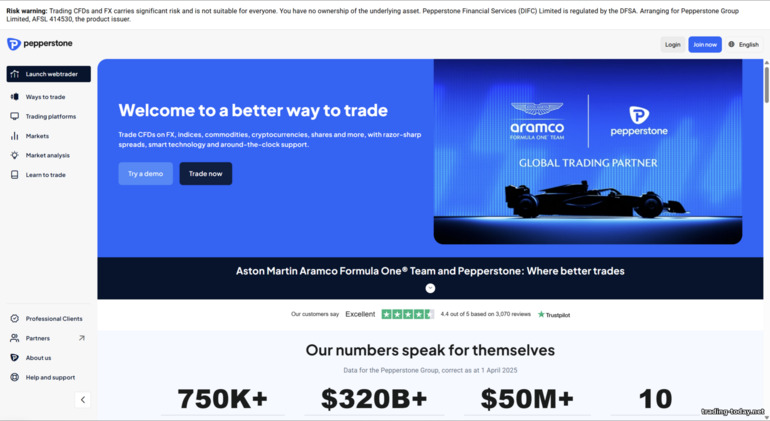
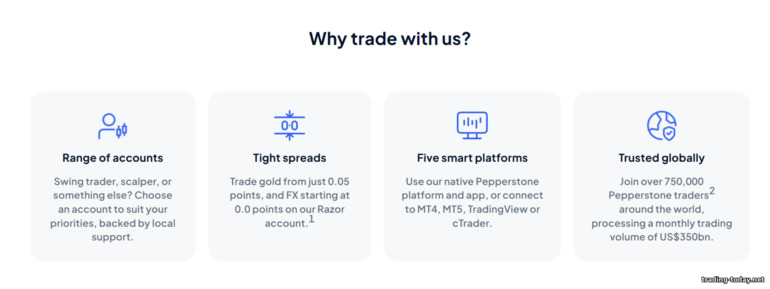

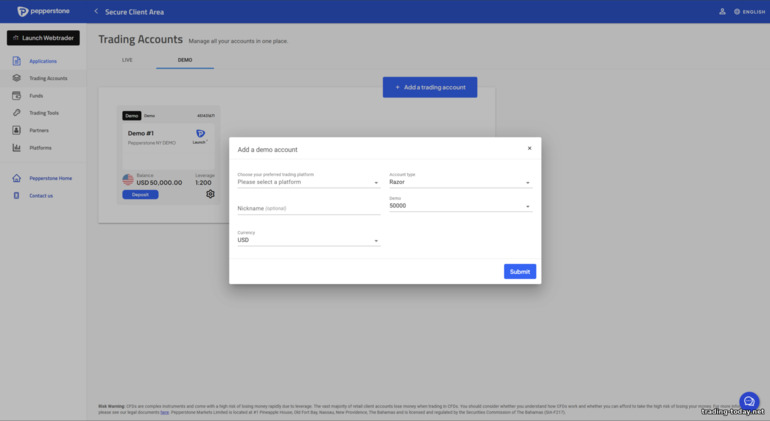
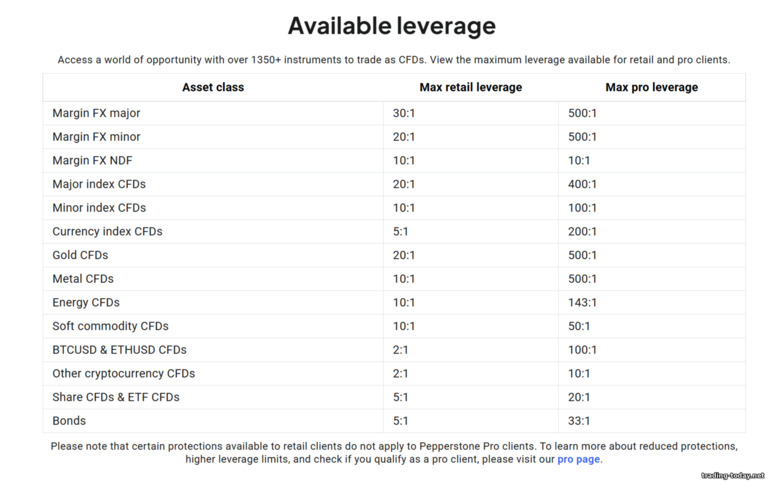

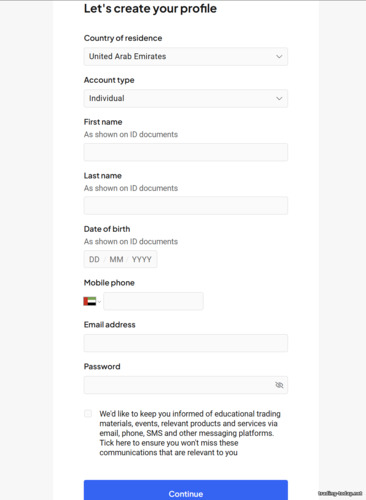
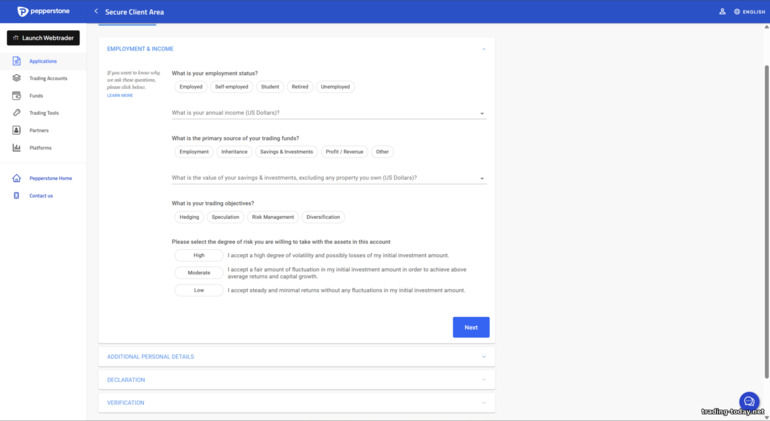

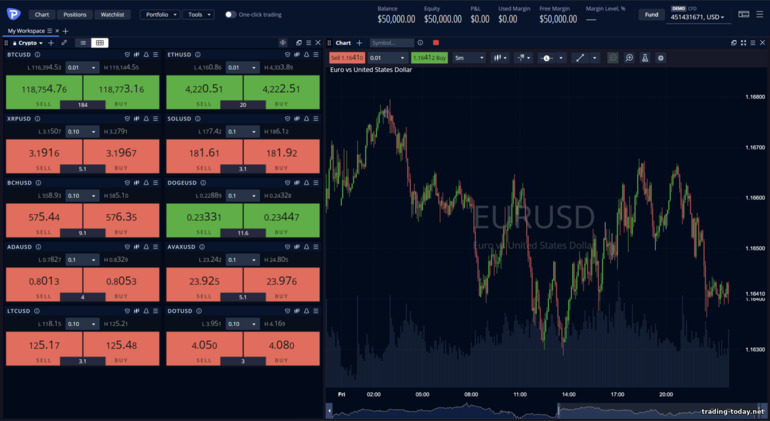
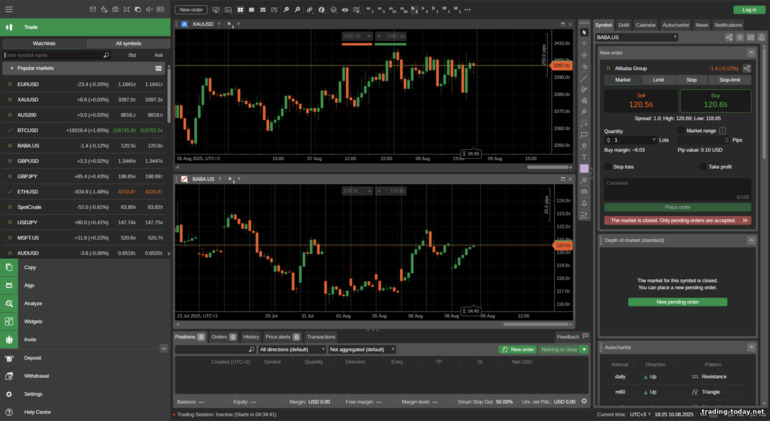


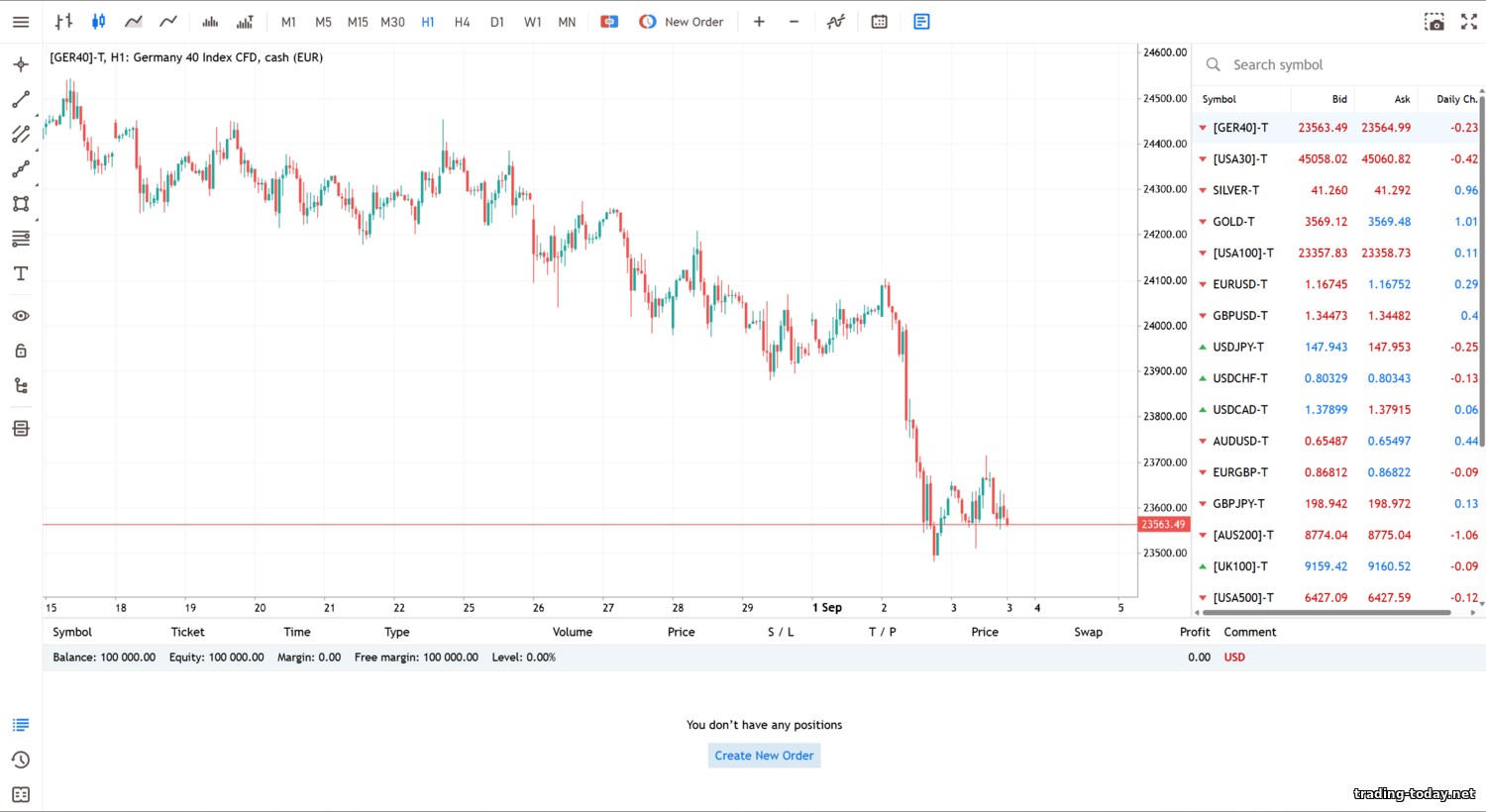
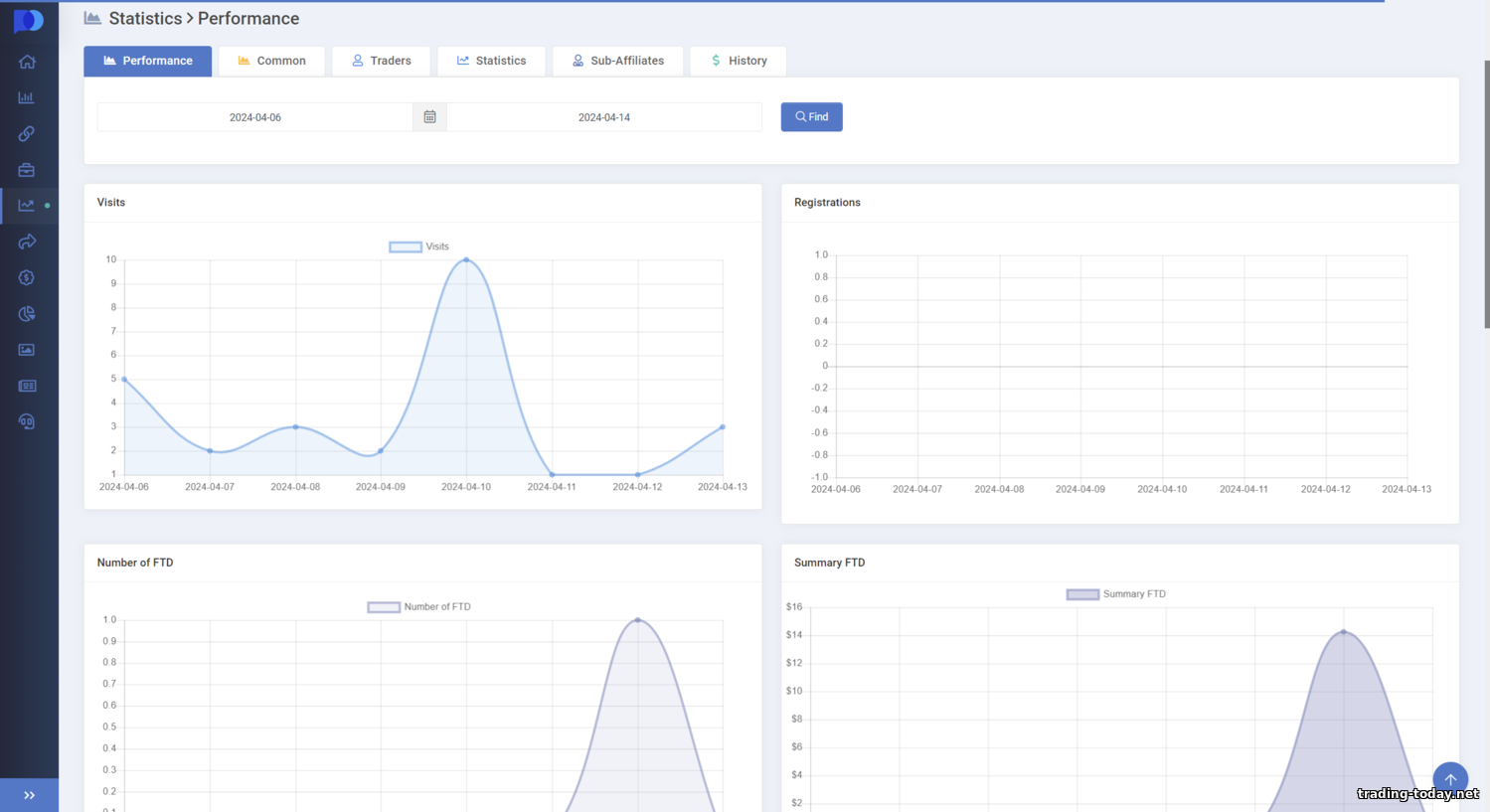
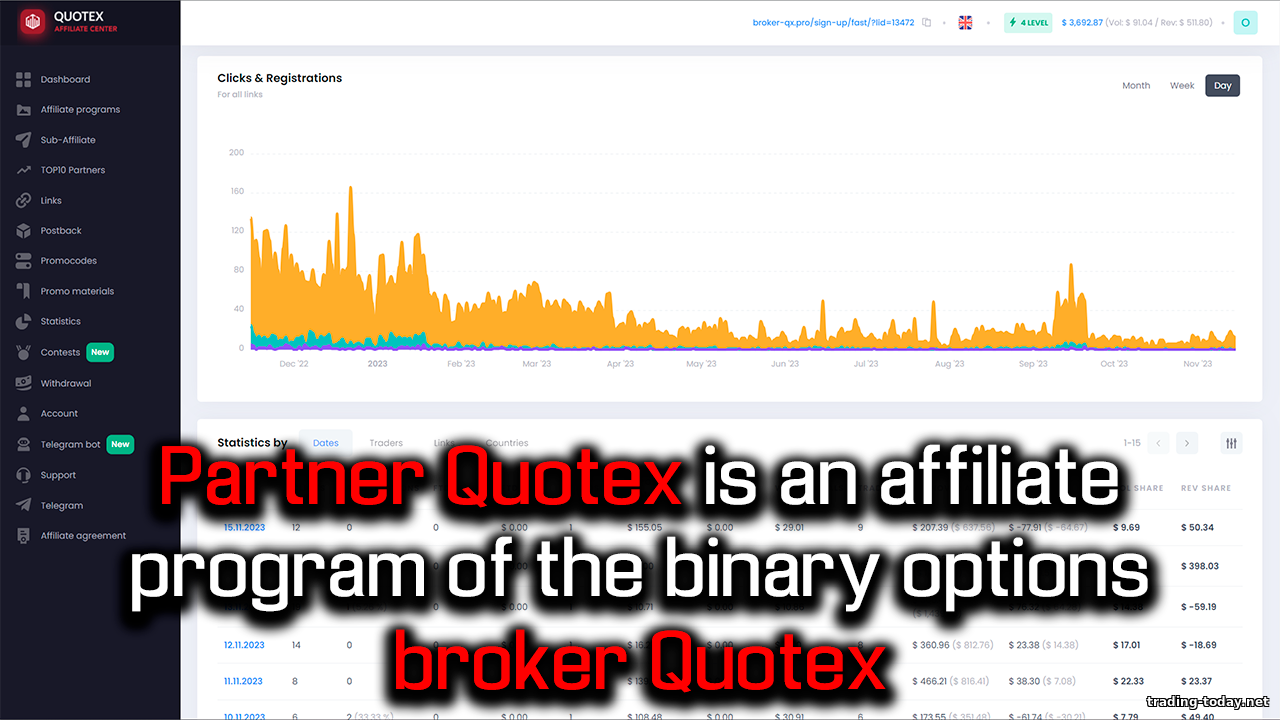
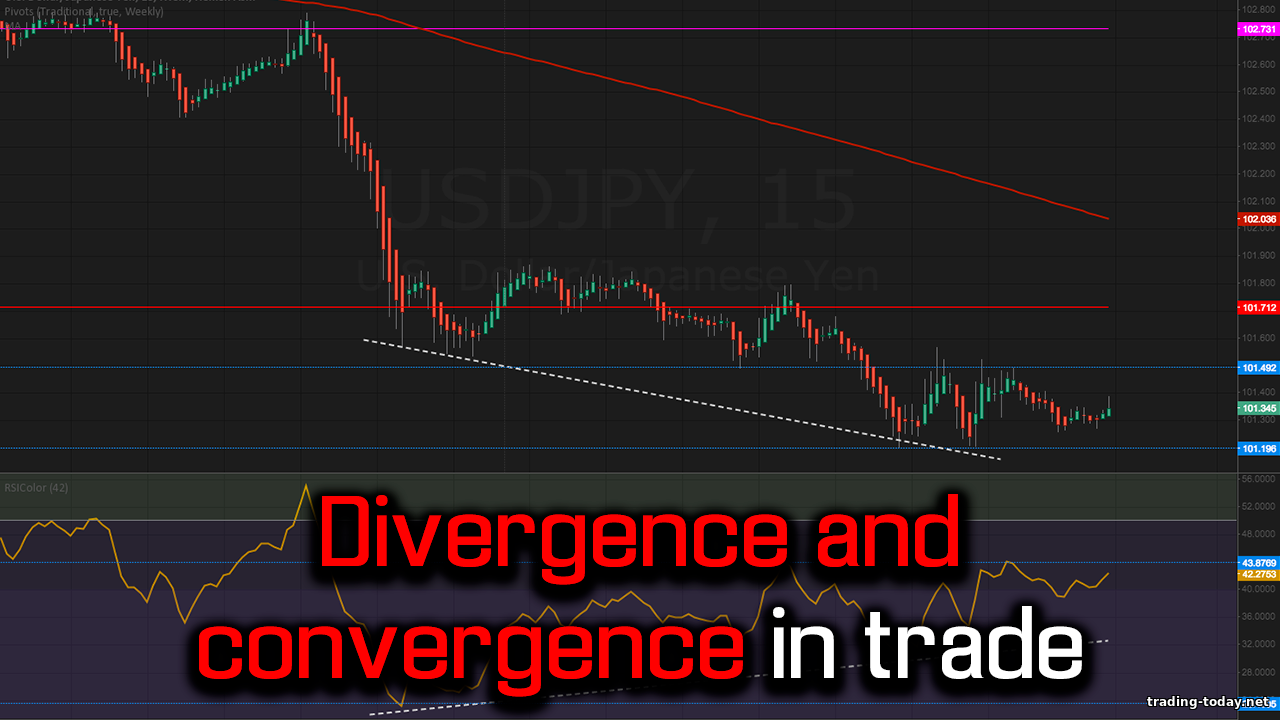
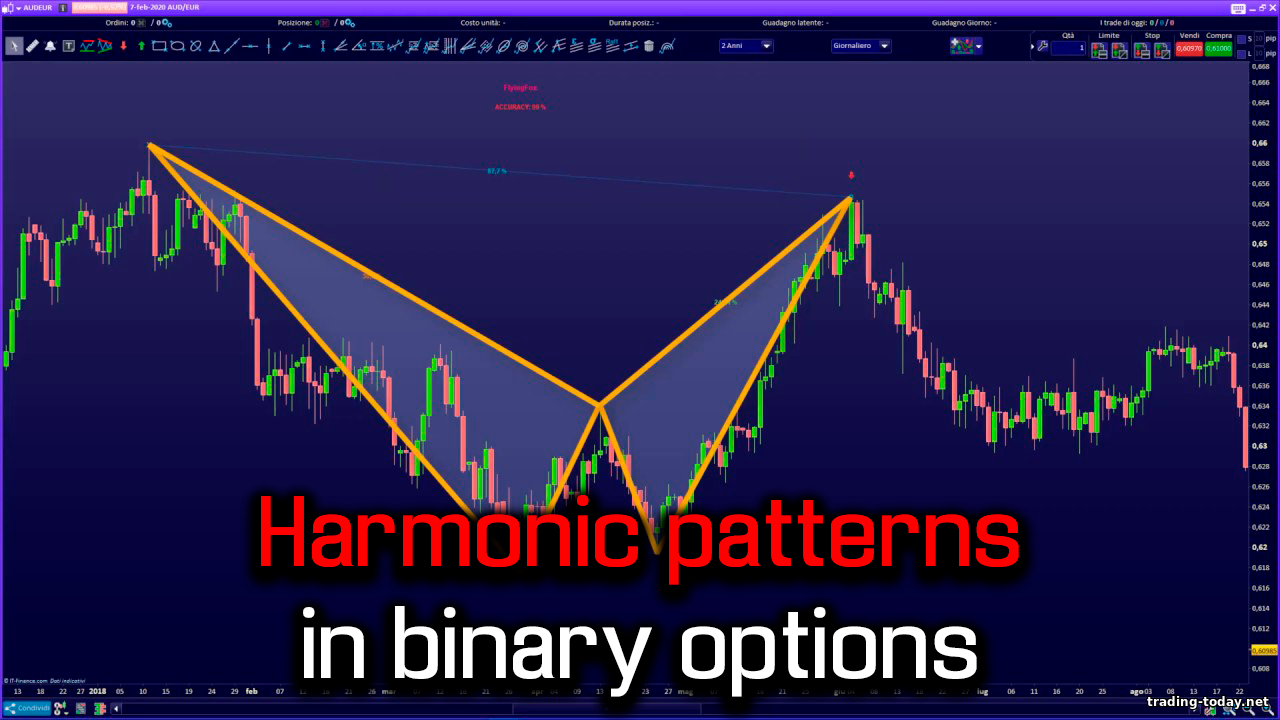
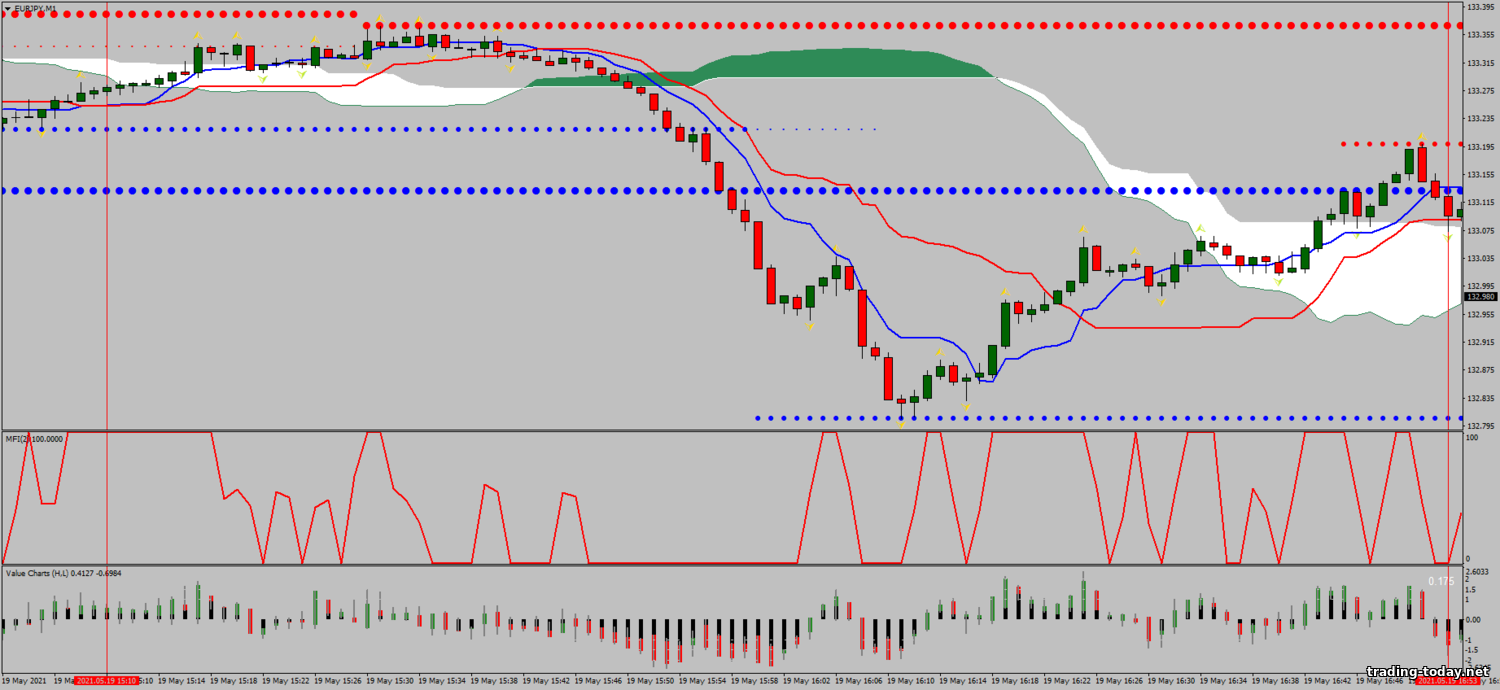
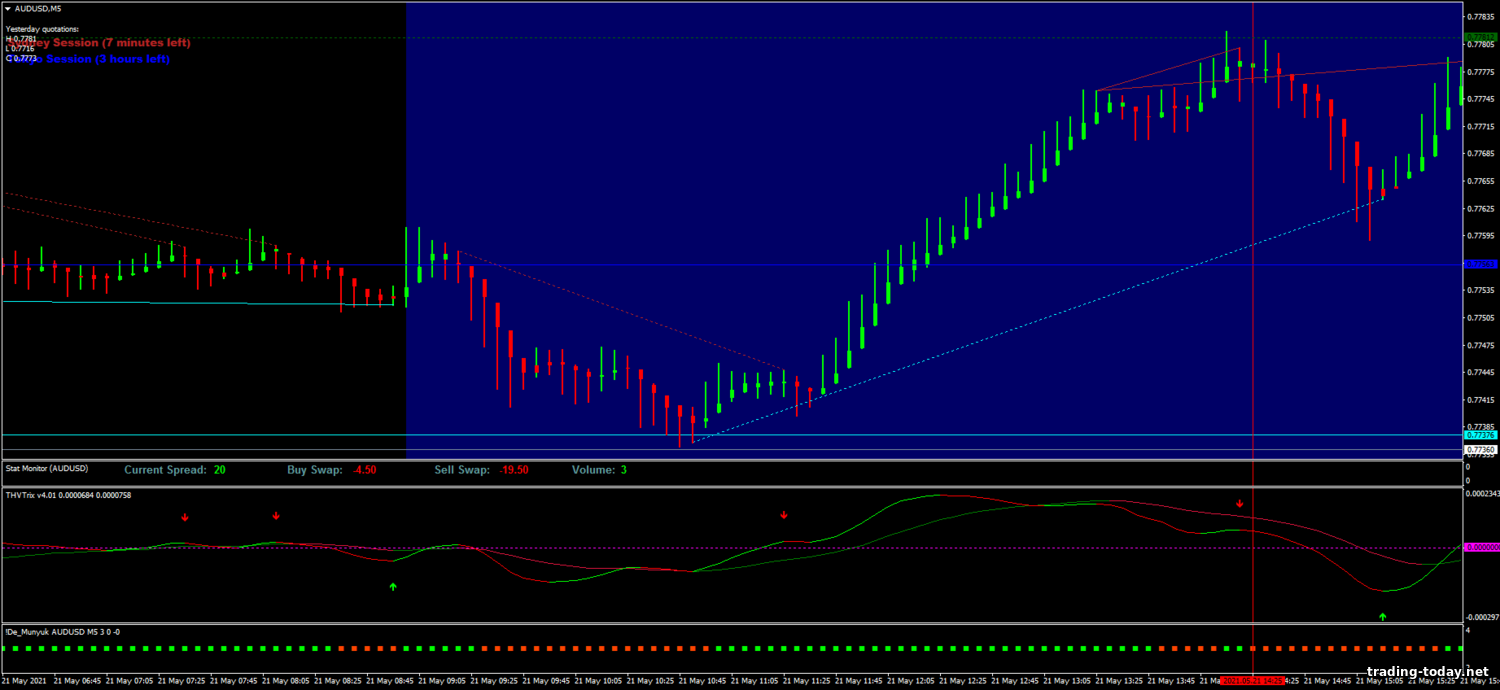
Reviews and comments